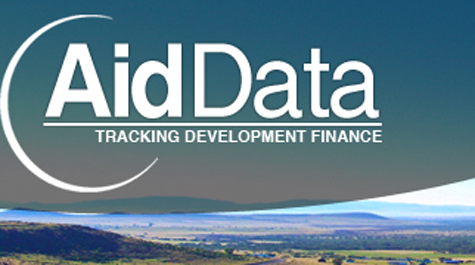AidData helps to design an interactive map for the African Development Bank (AfDB)
William & Mary’s international development research program, AidData helped design and populate an interactive map for the African Development Bank (AfDB) that depicts the precise locations of the bank’s ongoing projects in Cameroon, Morocco and Tanzania. These countries represent a subset of the 2,040 activities financed across the continent of Africa since 2009. The map was recently unveiled at the AfDB’s Annual Meeting in Lisbon.
“This geo-coding work follows up on work we did last summer for the World Bank,” said Mike Tierney, director of William & Mary's Institute for Theory and Practice of International Relations. The mapping project with the World Bank was recently featured in the New York Times.
“It has been great for our students and faculty to work with two of the premier development institutions on an innovative project that will help practitioners to do planning and to evaluate the allocation of their resources,” Tierney added. “As important, these data are now being used by students and faculty in their own research projects.”
AidData is a collaborative initiative between William & Mary, Development Gateway and Brigham Young University to provide products and services that promote the dissemination, analysis and understanding of development finance information. AidData works with a range of partners to geocode development activities, create visualizations and explore new ways to collect and standardize information about development projects.
In order to create the AfDB map, researchers from AidData had to identify the latitude and longitude coordinates of the location(s) where each project is being implemented. After project locations were identified, dynamic maps for the web and cell phones were created in partnership with Esri, a geographic information systems (GIS) software provider.
“The map makes it easy to see where the Bank is working,” said Simon Mizrahi, manager of the AfDB’s Results and Quality Assurance Department.” “This is a critical step toward being able to ask the right questions about whether aid is going to the right places and what impact it has.”
In a press release, AfDB said the availability of geocoded project data will help the AfDB to evaluate progress and plan future initiatives to combat challenges in areas such as climate change, infrastructure, governance, and private sector development. They noted that opening up this information will allow others to better understand where aid is going, and to provide feedback on its impact.
“Geocoding takes discussion about aid from the abstract to the concrete,” says Jean-Louis Sarbib, CEO of Development Gateway. “It allows you to determine whether or not aid is going to the areas that need it the most.”
“We currently have William and Mary students working on this and related projects in Washington D.C., Williamsburg, and Uganda,” said Tierney. “As other donor governments and development organizations adopt our geo-coding methodology, we are hopeful that we can help develop an international standard for this kind of work. This would make data on development finance more accessible and comparable, which would help recipient governments to do better planning, help donor organizations to make better allocation decisions, and, ultimately, help to make aid projects more effective in alleviating poverty.”
















